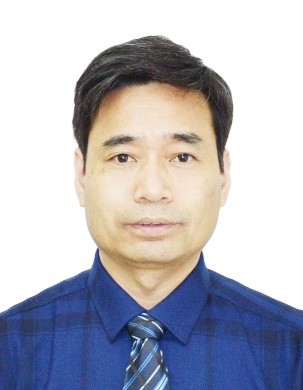Haizhi Song
2D Materials
Southwest Institute of Technical Physics, Chengdu, China
Email: hzsong1296@163.com
Biography
Hai-Zhi Song, Professor at Southwest Institute of Technical Physics, majoring in optoelectronics, nano-materials and quantum information processing for a long period. Experience: 1986-1990, undergraduate, Nanjing Univ.; 1990-1995, PhD, Peking University; 1995-1997, postdoc, Nanking Univ.; 1997-1998, visiting scholar, K. U. Leuven, Belgium; 1998-2001, Assistant Professor, Tsukuba University, Japan; 2001-2012, Researcher/Senior Researcher, Fujitsu Lab. Ltd., Japan; 2012-2014, Senior Researcher, University of Tokyo; 2014-now, Professor, National Distinguished Expert, Southwest Institute of Technical Physics; 2015-now, Professor, University of Electronic Science and Technology of China. In recent years, he fabricated high-speed quantum-dot lasers for optical communication and high-power quantum-well lasers for purely-green display; invented a technique to control the size and site of QDs by atomic-force microscopy lithography, and an apparatus to detect single electron spin states by optically-detected magnetic resonance; developed focal-plane single-photon avalanche detectors, providing central devices for 3D laser detecting and ranging system; explored antimonide middle- and long-wavelength infrared detectors; advanced some organic-gas sensitive nano-belt materials; found several Nickle-based nano-materials serving as efficient catalysts in hydrogen-evolution reaction; designed a series of 2-dimensional metal-halides as potential optoelectronic and catalysis materials; fabricated and studied several novel transparent ceramics materials; realized a series of optoelectronic quantum devices for quantum information processing, such as fiber-integrated photon-pair-entangler, chiplet heralded single photon emitter, fiber quantum memories, quantum number generator, etc.
|
|
Abstract for Presentation
Studies on nano-crystalline and 2D materials for clean energy
Nano-crystalline materials have played important roles in the field of clean energy. Two-dimensional (2D) materials are recently considered more and more effective in the same area. In recent years, our united group tried exploring nano-materials for catalyzing hydrogen-evolution reaction, searched carbon-based nano-materials for hydrogen storage, and designed novel 2D materials for solar-cells. We fabricated nickel phosphides consisting of porous-Ni/nano-flakes/nano-particles, which exhibit hydrogen-evolution catalysis performance beyond platinum nano-wires, as shown in Figure 1. It was found that carbon nano-dot decorated manganese-nickel-phosphides almost reach the catalysis capability of nano-wire platinum in both acid and alkali conditions and with both high and low current densities [1]. Using hetero-metal-doping, the hydrogen-evolution catalysis activity of nano-nickel-selenides was greatly improved. By first-principle calculations, lithium-decorated and nitrogen-doped penta-graphene was recognized as a potential material for hydrogen storage, since many hydrogen molecules can be adsorbed around a lithium atom. First-principle calculations also help designing new 2D materials such as IVB/IB halides, which exhibit structure stability, mechanical stability, novel electronic properties and excellent light absorption characters, and thus suggest their application potential as solar-cell and photo-catalysis materials [2].
References
[1] W. Chen, Z. Qin, B. McElhenny, F. Zhang, S. Chen, J. Bao, Zh. M. Wang, H. –Z. Song* and Z. Ren, J. Mater. Chem. A, 7 (2019) 21488.
[2] X. Huang, L. Yan, Y. Zhou, Y. Wang, H. -Z Song*, and L. Zhou, J. Phys. Chem. Lett., 12 (2021) 525.
WELCOME TO CHINA TO ATTEND THE ICANS
23-26 August, Nanjing, China
Connect with us:



